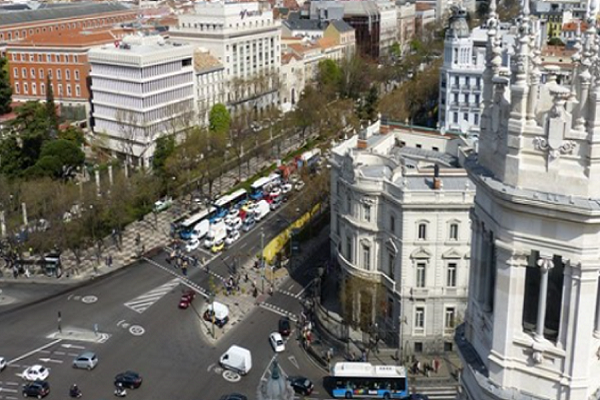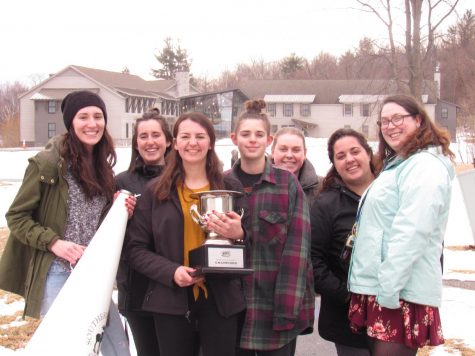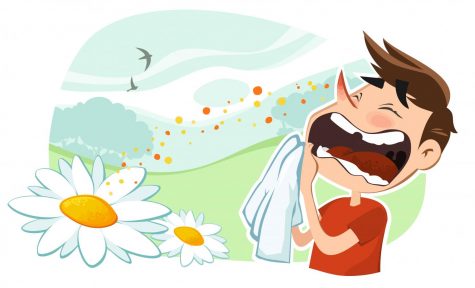Spain is Everything, but Plain

“To go to bed at night in Madrid makes you as a little strange. Nobody goes to bed in Madrid until they have killed the night.” – Ernest Hemingway
Madrid, the capital of Spain, is located on a plateau 650 metres above sea level.The word Madrid is derived from the arabic word “magerit” meaning “place of many streams.” It is populated by three million people today and the weather is characterized by cloudless days unique to Spain.
Curious as to how to get around in Madrid? Well, there are 13 metro lines, over 170 bus lines, and 10 lines of Cercanias: local trains that connect the city center with the suburbs. For tourists, there are passes for unlimited usage for up to seven days.
According to Go Madrid, the top best restaurants to go to in Madrid include La Corral de la Morería, Café de Chinitas, Botín, Restaurante La Barraca, and La Buganvilla. So, when in Madrid eat a lot (have a gym membership back at home waiting for your return)!
As reported by 12 Most, a blogging website, there are 12 Most Magical Reasons to Visit Madrid. Here I will list ten:
1. Museo Del Prado
Architect Juan de Villanueva designed the Museo Nacional del Prado, which in the beginning was constructed to be the Natural History Cabinet. The Museo Nacional del Prado opened up to the public in November, 1819. If you are interested in learning more follow this link to their website: https://www.museodelprado.es/en/visit-the-museum
2. Palacio Real
The Palacio Real de Madrid is the official residence of the Spanish Royal Family in the city of Madrid. The construction for the Royal Palace started in 1734 and it finally opened in 1755. Currently, it is only used for state ceremonies and is the largest and most beautiful building in Madrid. Inside the palace there is furniture, tapestries, paintings, ceramics, and important works of art and frescos by Tiepolo. The public can only access certain areas. It is open all year around, but closed when official ceremonies and receptions are held.
3. Real Jardin Botanico
The Royal Botanical Garden of Madrid is an 8-hectare botanical garden founded in 1755 by King Ferdinand VI. With Madrid’s pleasant climate, the botanical garden is open year-round. The entry fee is 2 euros, students get a discount, and pensioners and children are free.
4. Parque del Buen Retiro
The Buen Retiro Park is one of the largest parks in the city of Madrid. It has 125 hectares and has more than 15,000 trees all around. It offers cultural, leisure, and sport activities to all people. The park was born in the 1630’s to the 1640’s when Gaspar de Guzman (Count Duke of Olivares) gave King Philip IV tracts of land for the Courts recreational use.
5. Reina Sofia Museum
The Museo Nacional Centro de Arte Reina Sofia is Spain’s national museum of 20th century art. The museum was inaugurated on September 10th, 1992 named for Queen Sofia. Follow this link to know more information: http://www.museoreinasofia.es/en
6. Toledo
Toledo is set on a hill above the plains of Castilla-La Mancha in central Spain. It is one of the Spanish cities with the greatest wealth of monuments. It is also known as the city of three cultures because Christians, Arabs, and Jews lived there for centuries together.
7. Flamenco
Flamenco is an art form native to the Spanish regions that include singing, guitar playing, dance vocalizations, hand clapping, and finger snapping. Flamenco dance has complex patterns of rhythm and and sophisticated footwork with the upper body.
8. Shoes Galore
Well, this one is easy – a store of shoes!
9. Museo Thyssen-Bornemisza
The Thyssen is an art museum in Madrid, Spain located near the Prado Museum (the first thing on this list). Follow this link to see what’s happening: http://www.museothyssen.org/en/thyssen/home
10. El Rastro
Lastly, El Rastro is a open air flea market in Madrid that is very popular! It is held every Sunday from 9am to 3pm. It is also open on public holidays with the intention to attract many tourists. It is said to be “the largest flea market in Europe with up to 3500 different stalls it goes through several streets in one of the oldest working class neighborhoods.”
Now can you see that Spain is everything, but plain?






